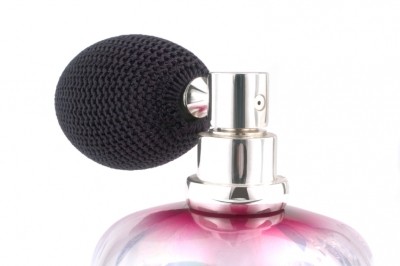Luxury : one size does not fit all
for luxury cosmetic brands on both sides of the Atlantic, a recent
report points out that, despite the twinned growth, the each
markets has very distinct characterteristics, reports Simon Pitman.
The main differences can be found by looking at the attitude to luxury goods and how they are acquired in both Europe and the US. European heritage luxury brands share a common belief - that exclusivity is critical to maintaining the luxury brand's allure. American luxury consumers, on the other hand, don't put much stock in exclusivity for exclusivity's sake, rather they prize individuality above all else and are proudly democratic in their view of luxury.
A prime example of this was seen recently when leading US business and media figure Oprah Winfrey fell victim to this European 'exclusivity' after being denied entrance to the ultra-chic Hermes boutique in Paris, purveyors of some of the world's finest and most expensive scents and accessories.
As a democratically-minded luxury American consumer, Winfrey was said to have been outraged that she should be turned away. In the US ideas of brand exclusivity are rejected as they are related to European aristocratic ideals that simply do not exist there.
Exclusivity, in and of itself, brings very little luxury value to the American luxury consumer. Nearly 80 per cent of American luxury consumers agree with the statement, "Luxury is for everyone and different for everyone," according to the latest Luxury Report 2005 from Chanel, for example, is one luxury goods company that has made a distinct effort to adapt its portfolio to individual markets. Taking a look at the company's website, its cosmetics and fragrance section has been adapted to meet different demands around the world.
Looking at Chanel's US and English language European site, there are subtle differences in the product line-ups and some differences towards the way the products are marketed. Men's skincare, for example, is given greater status on the US site, reflecting the more advanced state of the market there and, perhaps, that the fact that the market is more open to new ideas.
However, it is equally interesting to note that Chanel's flagship brand, No.5, is marketed in exactly the same way world-wide, suggesting that certain universal brands can be sold in the same manner, no mater what part of the world it is.
Ultimately the Unity Marketing report conveys the message that exclusivity is not motivating to American luxury consumers. There, luxury consumers yearn for 'specialness'.
Exclusivity for the sake of exclusivity, as expressed by the European luxury ideal, is not what American luxury consumers value, rather it's an exclusiveness derived from the ability to express a personal point of view, an attitude and one's uniqueness.
"The challenge for luxury marketers in the American luxury market is to deliver greater exclusivity by making the luxury consumer feel special and unique, but never let it morph into class snobbishness or arrogance. It is the difference between putting up a stop sign that says 'Do Not Enter,' to putting up a sign that says, 'Turn Here for Something Really Special.' Luxury marketers have to give their consumers an exit ramp off the 'mass track' that creates a mystique and an appeal without the negativity of exclusivity muddying the waters," Danziger said.
"It is not about excluding someone from having this item, this brand, or shopping in this store; it is about turning this item, this brand, this store into something more special, unique and life enhancing to the individual. It is a subtle shift in emphasis from the negative-leaning 'exclusivity' to the positive-trending 'individuality.'"


![[Getty Images]](/var/wrbm_gb_food_pharma/storage/images/_aliases/wrbm_tiny/publications/cosmetics/cosmeticsdesign-asia.com/china/china-focus-latest-developments-in-china-s-booming-beauty-market22/17370102-1-eng-GB/China-focus-Latest-developments-in-China-s-booming-beauty-market.jpg)
![YSL's LoveShine launch has sparked a demand surge in Japan. [YSL]](/var/wrbm_gb_food_pharma/storage/images/_aliases/wrbm_tiny/publications/cosmetics/cosmeticsdesign-asia.com/article/2024/04/24/ysl-loveshine-launch-propels-lip-gloss-sales-to-record-highs-in-japan-since-2020/17372064-1-eng-GB/YSL-LoveShine-launch-propels-lip-gloss-sales-to-record-highs-in-Japan-since-2020.jpg)
![There is significant scope for innovation and new launches in the hair repair sector, especially in soaring markets such as China. [Getty Images]](/var/wrbm_gb_food_pharma/storage/images/_aliases/wrbm_tiny/publications/cosmetics/cosmeticsdesign-asia.com/article/2024/04/24/croda-zeroes-in-on-hair-repair-solutions-as-damage-hair-concerns-surge-in-markets-like-china/17362731-1-eng-GB/Croda-zeroes-in-on-hair-repair-solutions-as-damage-hair-concerns-surge-in-markets-like-China.jpg)



![Lubrizol has extended its partnership with C-beauty major PROYA. [PROYA]](/var/wrbm_gb_food_pharma/storage/images/_aliases/wrbm_tiny/publications/cosmetics/cosmeticsdesign-asia.com/headlines/brand-innovation/lubrizol-bullish-on-potential-of-c-beauty-growth-potential/17362515-1-eng-GB/Lubrizol-bullish-on-potential-of-C-beauty-growth-potential.jpg)
